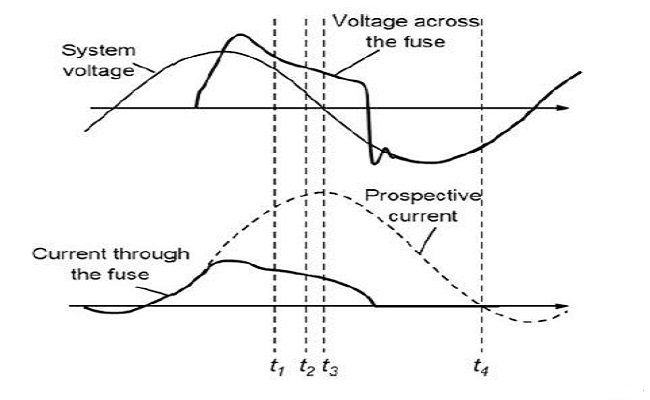
Figure shows typical current(lower) & voltage(upper) waveforms when a fuse interrupts a current. When the total arc voltage across the fuse is of comparable magnitude as the system voltage, the current amplitude during arcing becomes smaller than the prospective current.
Due to inductance in the circuit, the voltage across the fuse may be greater than the system voltage. At short circuit, the time until melting depends on the degree of asymmetry of the fault, i.e., when the short circuit occurs.
As opposed to most switchgear, fuses limit the fault currents considerably. An efficient current limiting leads to a reduction in the mechanical and thermal stresses on all the equipment that carries the fault current. For a symmetrical short circuit current, the current-limiting characteristic may be determined precisely, showing the peak value of the current as a function of the prospective short circuit current.
The fault current is here strongly asymmetric. The time t1 is when the fuse element melts; t2 is when the arc voltage has the same magnitude as the system voltage, t3 is when the arc voltage reaches its peak value and the current is interrupted at t4.



